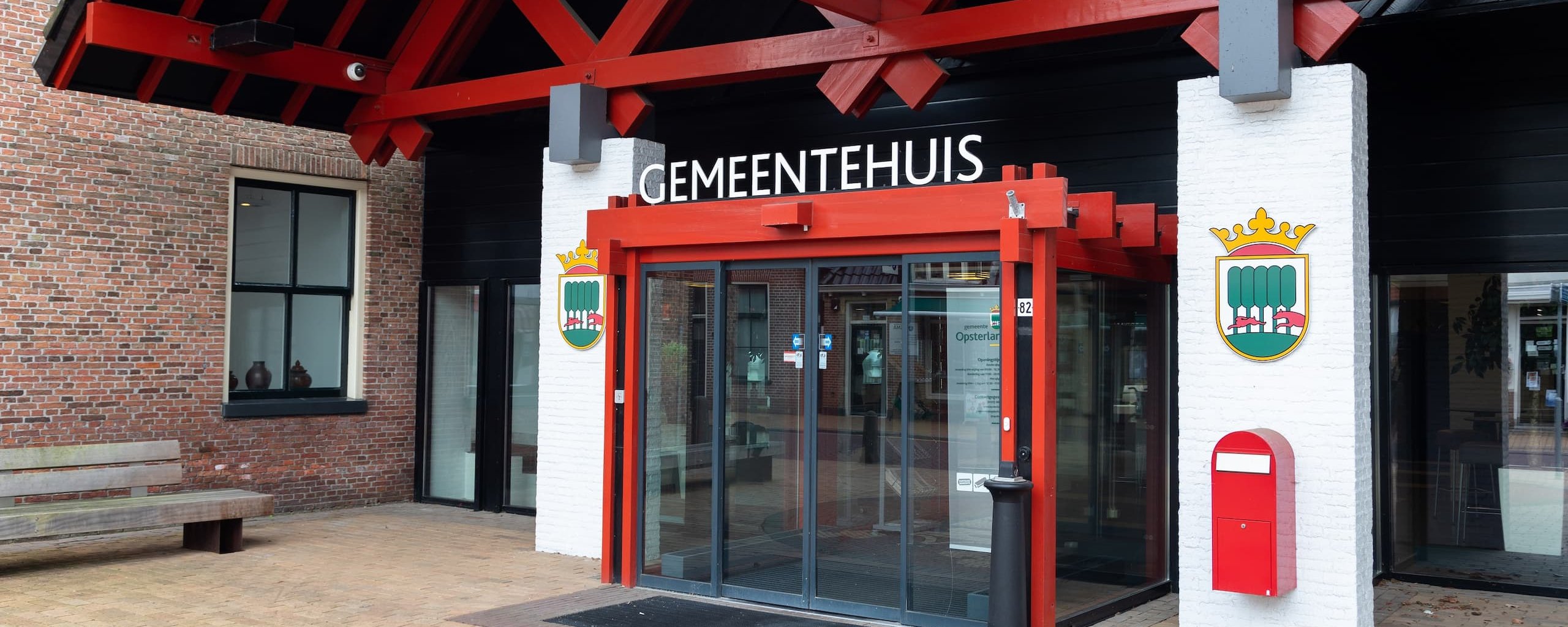Commemoration of war victims in Opsterland
Throughout the Netherlands at eight o'clock tonight there was a two-minute silence. Also in Opsterland, the victims of World War II were commemorated in several villages. On behalf of the city council, Mayor Andries Bouwman and aldermen Marcel van Opzeeland, Libbe de Vries and Durk Durksz attended the commemorations in Gorredijk, Beetsterzwaag, Hemrik and Tijnje.
"Over the past few weeks we have been dwelling on the dark period of 1940-1945 in various places in Opsterland. For in our municipality, too, the inhabitants sighed under the increasingly cruel and unaccountable regime of the German occupiers. Fear, violence, uncertainty, grief, hunger: daily life was black-rimmed," said Mayor Bouwman in the Skâns in Gorredijk.
"It featured stories of brave citizens who stood up to the new authority. It is precisely these local stories that are so incredibly important to tell. After all, they give us extra awareness. They come extra close. Because perhaps we knew those involved personally. Was it family, friends or a fellow villager."
The places where it happened are often still intact. "We can grasp the railing of the bridge where Gerk Numan was shot. The 10 trees in a row at the edge of the woods near Allardsoog are like the 10 men who were shot there from the Scholtenhuis in Groningen by the Germans. Or the many documents that remain of Jan Eisenga, who was executed by the Germans in Leeuwarden after his support of the Milk Strike in 1943, ensure that we can meticulously pass on his courageous story.''
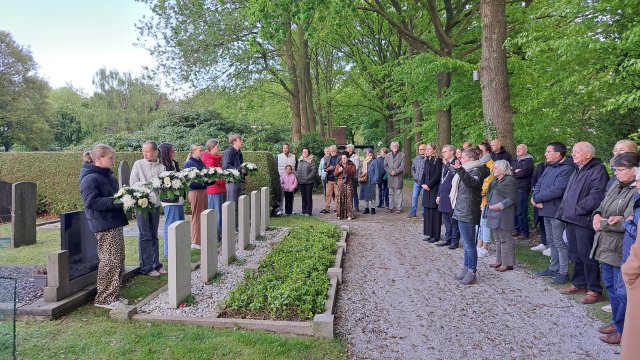
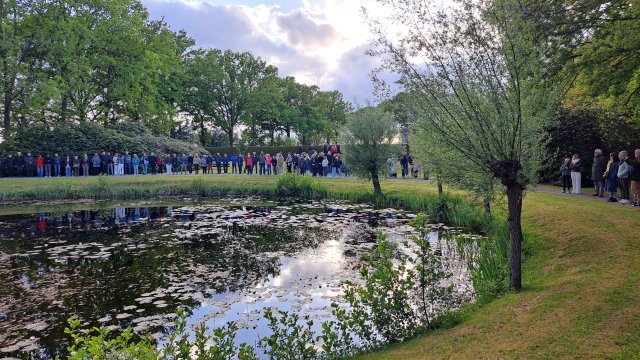
Standing up for freedom takes courage
Bouwman described the war that swept over Europe and other parts of the world between 1940 and 1945 as a storm. A storm that blew everything down, destroyed, killed and shattered dreams.
"But after it was fought and the storm of war subsided, peace came. Peace is like a young tree that begins to grow in the open plain left by the storm. But that tree does not have it easy, for the storm may be gone, but its roots must dig deep to avoid being blown over again. As we remember what happened, the root of the tree of peace grows and grows stronger and stronger, able to withstand storms. And do you know who those roots of that tree are? They are you! That is us together"
Commemoration is necessary to learn lessons from history, Bouwman made clear. "If we do not realize that men and women who died 80 years ago here in Opsterland for or because of our freedom, if we do not constantly work to cherish and protect peace, we will again find ourselves in situations where we have to fight her. Tomorrow we celebrate freedom extensively. Cherish her, protect her and pass her on!"
In the Dorpskerk in Beetsterzwaag, Alderman Marcel van Opzeeland stated that standing up for peace and freedom requires commitment and courage every day. "The world around us reminds us: freedom is vulnerable."
Pieter Hoekstra, theologian, psychologist and director-director of the Netherlands Institute for Logotherapy and Existential Analysis, gave a short talk on Austrian Jewish psychiatrist Viktor Frankl. He survived several concentration camps, including Auschwitz, but lost his wife, parents and brother. Yet he continued to believe that life can have meaning, even if you experience a lot of pain or sorrow. Frankl learned: you cannot lump people together. Everyone is individually responsible for what he or she does. And precisely in the most difficult circumstances, people can find strength by searching for meaning and purpose.
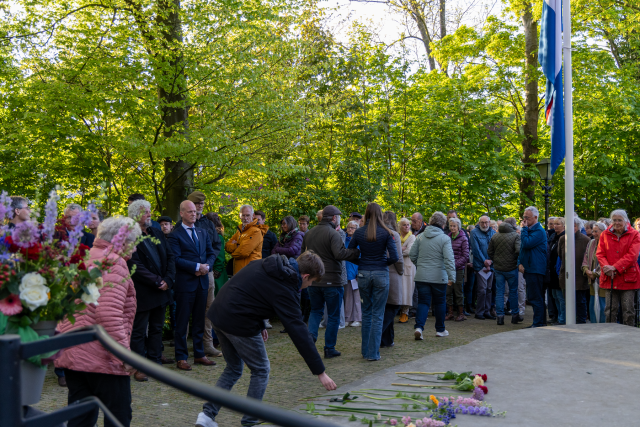
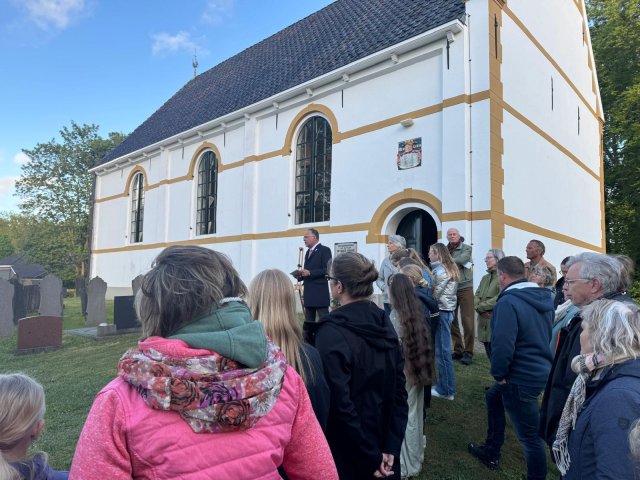
Freedom is never finished
Alderman Libbe de Vries attended the commemoration in Hemrik. Freedom is never finished. We must work daily to give space to others and guard our democracy. Freedom is shared with each other. Stories about the war and stories about people who survived this horrible period, or who lost their lives in it, make us more aware of the vulnerability of freedom, he told those present.
Those present in Hemrik paused to remember the life of French pilot Arnaud Charles Marie de Saxcé, who died here on April 10, 1945 after his plane was hit by anti-aircraft fire during a reconnaissance flight over Friesland. On April 12, 1945, he was buried in the Hemrik cemetery. On July 27, 1949, he was reburied in his birthplace of St. Jean de Braye (Loiret) in France. A plaque has been placed in Hemrik in memory of the French pilot, who lived to be only 25 years old.
Durk Durksz attended the commemoration at the general cemetery in Tijnje. A silent march through the village was held beforehand.
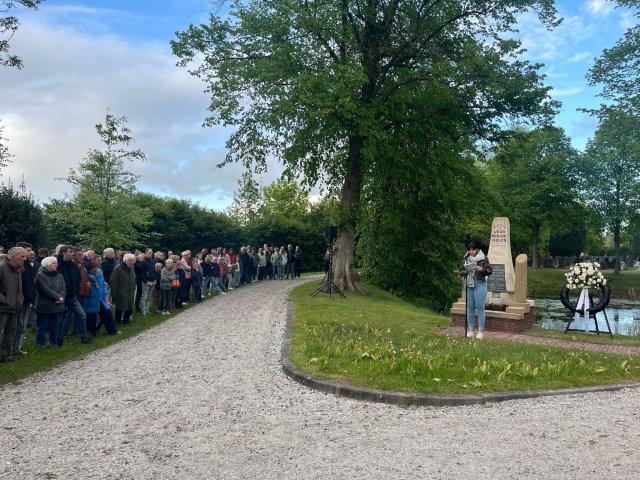
More information?
